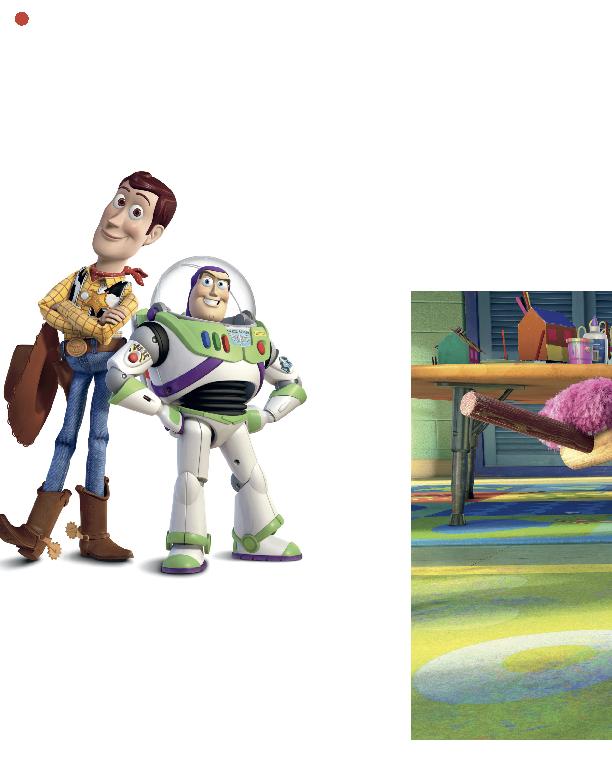
bers. "So I remember turning in my first bunch
of pages and thinking, `Man, I hope this
works,' because you never know what kind of
creative chemistry you're going to have until
you actually start working together."
all improvements on what was already there.
"That was a hugely liberating moment," Arndt
have to be fighting this guy and arguing my
point of view, but I could stop worrying about
stepping on the brakes and being critical of my
own work. I could start shot-gunning ideas as
fast as possible and trust that Lee would sort
out the wheat from the chaff. It ended up
being a great relationship."
while Arndt was there celebrating its success,
been bought by The Walt Disney Company
and Pixar's Chief Creative Officer, John Las-
seter, who directed the first two Toy Story films,
would take on the same title at Walt Disney
Animation Studios in addition to retaining his
role at Pixar.
CEO Steve Jobs, it appeared the two sides could
not reach an agreement, leaving Pixar to either
sign with another studio or remain independ-
ent. One trump card Disney held, however, was
the rights to Pixar's old films... and characters.
When talks began to break down, Eisner put
Toy Story 3 into preproduction without involv-
ing any of the first two films' collaborators. It
even released, so I really felt like a kid from the
sticks who is suddenly asked to be the lead-off
batter for the Yankees," Arndt jokes.
what the content of the film could be. So Las-
seter, Stanton, Docter and Unkrich -- along
with Up co-director Bob Peterson, story artist
Jeff Pidgeon, and producer Darla K. Anderson
-- went on a weekend "story retreat" at the
same Northern California cabin where the four
of them and the late Joe Ranft broke the orig-
When they returned from the retreat, Stanton
took a short break from WALL-E to draft a 20-
page treatment that he then turned over to
Arndt and Unkrich. But like most Pixar films,
this early treatment doesn't share a whole lot
with the final product. "It had a rock-solid be-
ginning and a rock-solid ending, which, as a
writer, is all you really need to get going,"
Arndt says. "But a lot changed between that
first treatment and the final film."
new inciting incident for the story, a new mid-
point, new act breaks and a different third act
-- with the exception of the final scene. "That
final scene was always the anchor of the whole
movie," Arndt explains. "We always new it was
solid gold. But we knew there was a good story
in there somewhere. But going from the first